Instruction
Early Extension: One of golf’s most destructive swing flaws
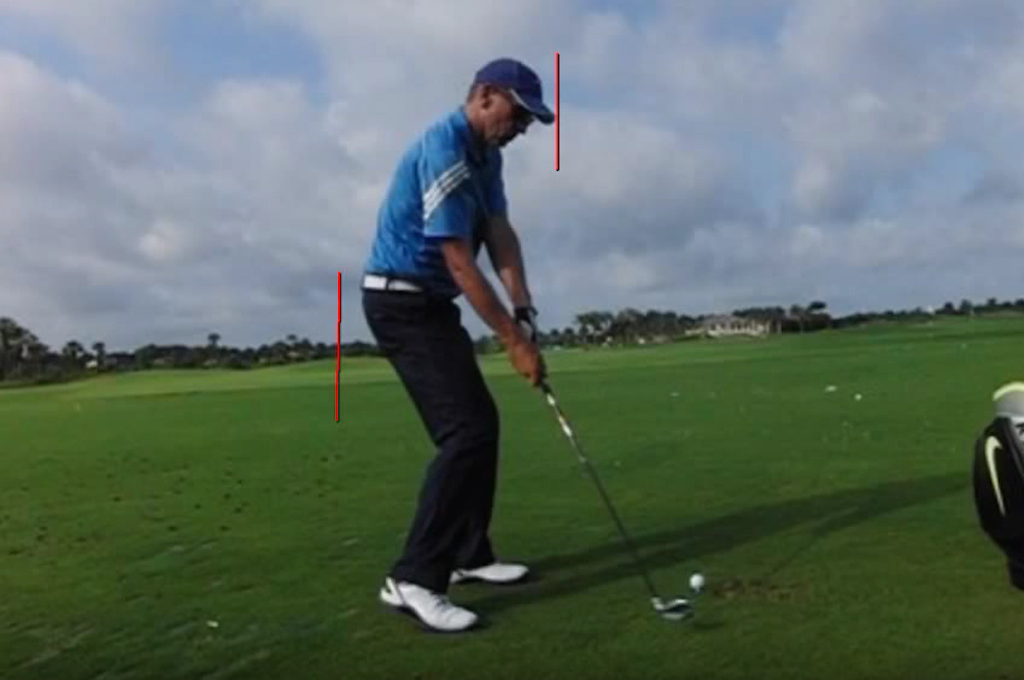
It’s known by various names: early extension, pelvic thrust, even “humping” the ball in some circles. What these terms describe is a premature motion of the lower body/pelvis toward the golf ball. In my opinion, there are not many moves in golf swing more destructive than this one.
Watch the video below, where I explain a classic example of this move.
https://www.youtube.com/watch?v=IomNBDmBEvc&feature=youtu.be
When the pelvis thrusts out toward the golf ball, invariably the torso moves AWAY from the golf ball, as you saw in the above video. Here are just some of the problems associated with this move:
- Loss of posture.
- Loss of ability to leverage the ground properly.
- Inability to swing the club through impact with any kind of proper arc.
- “Standing the club up,” which means that the hands will come in well above where they started on the downswing
- Inconsistent contact on face of the club.
- Inconsistent attack angle into the golf ball.
In short there is nothing to be gained and a lot to be lost when a player falls into this habit. That’s why you see so few tour players in this position. Notice the difference between the lower body motion in the first video and the way Jason Dufner moves his lower body in the video below.
I love the way Jason Dufner keeps his lower body UNDER him, which allows so much freedom for him to swing the arms through impact. He can exit to the left all he wants and hit down on the golf ball by applying the correct force. His path and attack angle are so consistent because he can maintain his posture right through impact.
If you suffer from this move, here’s a drill to help.
Try hitting some balls with an aim stick behind you, touching your rear end. Start without a club, and then progress to a few easy swings with a club. Gradually build to partial swings with a ball until you feel comfortable hitting full shots. See if you can feel the lower body using the ground and staying under you.
At first, you might feel as though the pelvis is actually backing up, pulling away from the ball, but I guarantee that it won’t be.
Even at home, you can take an address position with your rear against a wall and make some arm swings without a club. It will feel different, but create awareness of how the best golfers in the world create a position that allows for consistent ball striking.
If you’d like me to analyze your swing, go to my Facebook page or contact me ([email protected]) about my online swing analysis program.
- LIKE196
- LEGIT27
- WOW9
- LOL1
- IDHT6
- FLOP8
- OB1
- SHANK23
Instruction
The Wedge Guy: The easiest-to-learn golf basic

My golf learning began with this simple fact – if you don’t have a fundamentally sound hold on the golf club, it is practically impossible for your body to execute a fundamentally sound golf swing. I’m still a big believer that the golf swing is much easier to execute if you begin with the proper hold on the club.
As you might imagine, I come into contact with hundreds of golfers of all skill levels. And it is very rare to see a good player with a bad hold on the golf club. There are some exceptions, for sure, but they are very few and very far between, and they typically have beat so many balls with their poor grip that they’ve found a way to work around it.
The reality of biophysics is that the body moves only in certain ways – and the particulars of the way you hold the golf club can totally prevent a sound swing motion that allows the club to release properly through the impact zone. The wonderful thing is that anyone can learn how to put a fundamentally sound hold on the golf club, and you can practice it anywhere your hands are not otherwise engaged, like watching TV or just sitting and relaxing.
Whether you prefer an overlap, interlock or full-finger (not baseball!) grip on the club, the same fundamentals apply. Here are the major grip faults I see most often, in the order of the frequency:
Mis-aligned hands
By this I mean that the palms of the two hands are not parallel to each other. Too many golfers have a weak left hand and strong right, or vice versa. The easiest way to learn how to hold the club with your palms aligned properly is to grip a plain wooden ruler or yardstick. It forces the hands to align properly and shows you how that feels. If you grip and re-grip a yardstick several times, then grip a club, you’ll see that the learning curve is almost immediate.
The position of the grip in the upper/left hand
I also observe many golfers who have the butt of the grip too far into the heel pad of the upper hand (the left hand for right-handed players). It’s amazing how much easier it is to release the club through the ball if even 1/4-1/2″ of the butt is beyond the left heel pad. Try this yourself to see what I mean. Swing the club freely with just your left hand and notice the difference in its release from when you hold it at the end of the grip, versus gripping down even a half inch.
To help you really understand how this works, go to the range and hit shots with your five-iron gripped down a full inch to make the club the same length as your seven-iron. You will probably see an amazing shot shape difference, and likely not see as much distance loss as you would expect.
Too much lower (right) hand on the club
It seems like almost all golfers of 8-10 handicap or higher have the club too far into the palm of the lower hand, because that feels “good” if you are trying to control the path of the clubhead to the ball. But the golf swing is not an effort to hit at the ball – it is a swing of the club. The proper hold on the club has the grip underneath the pad at the base of the fingers. This will likely feel “weak” to you — like you cannot control the club like that. EXACTLY. You should not be trying to control the club with your lower/master hand.
Gripping too tightly
Nearly all golfers hold the club too tightly, which tenses up the forearms and prevents a proper release of the club through impact. In order for the club to move back and through properly, you must feel that the club is controlled by the last three fingers of the upper hand, and the middle two fingers of the lower hand. If you engage your thumbs and forefingers in “holding” the club, the result will almost always be a grip that is too tight. Try this for yourself. Hold the club in your upper hand only, and squeeze firmly with just the last three fingers, with the forefinger and thumb off the club entirely. You have good control, but your forearms are not tense. Then begin to squeeze down with your thumb and forefinger and observe the tensing of the entire forearm. This is the way we are made, so the key to preventing tenseness in the arms is to hold the club very lightly with the “pinchers” — the thumbs and forefingers.
So, those are what I believe are the four fundamentals of a good grip. Anyone can learn them in their home or office very quickly. There is no easier way to improve your ball striking consistency and add distance than giving more attention to the way you hold the golf club.
More from the Wedge Guy
- The Wedge Guy: Golf mastery begins with your wedge game
- The Wedge Guy: Why golf is 20 times harder than brain surgery
- The Wedge Guy: Musings on the golf ball rollback
- LIKE68
- LEGIT10
- WOW3
- LOL1
- IDHT0
- FLOP3
- OB0
- SHANK5
Instruction
Clement: Stop ripping off your swing with this drill!

Not the dreaded headcover under the armpit drill! As if your body is defective and can’t function by itself! Have you seen how incredible the human machine is with all the incredible feats of agility all kinds of athletes are accomplishing? You think your body is so defective (the good Lord is laughing his head off at you) that it needs a headcover tucked under the armpit so you can swing like T-Rex?
- LIKE0
- LEGIT1
- WOW2
- LOL0
- IDHT0
- FLOP0
- OB0
- SHANK2
Instruction
How a towel can fix your golf swing

This is a classic drill that has been used for decades. However, the world of marketed training aids has grown so much during that time that this simple practice has been virtually forgotten. Because why teach people how to play golf using everyday items when you can create and sell a product that reinforces the same thing? Nevertheless, I am here to give you helpful advice without running to the nearest Edwin Watts or adding something to your Amazon cart.
For the “scoring clubs,” having a solid connection between the arms and body during the swing, especially through impact, is paramount to creating long-lasting consistency. And keeping that connection throughout the swing helps rotate the shoulders more to generate more power to help you hit it farther. So, how does this drill work, and what will your game benefit from it? Well, let’s get into it.
Setup
You can use this for basic chip shots up to complete swings. I use this with every club in my bag, up to a 9 or 8-iron. It’s natural to create incrementally more separation between the arms and body as you progress up the set. So doing this with a high iron or a wood is not recommended.
While you set up to hit a ball, simply tuck the towel underneath both armpits. The length of the towel will determine how tight it will be across your chest but don’t make it so loose that it gets in the way of your vision. After both sides are tucked, make some focused swings, keeping both arms firmly connected to the body during the backswing and follow through. (Note: It’s normal to lose connection on your lead arm during your finishing pose.) When you’re ready, put a ball in the way of those swings and get to work.

Get a Better Shoulder Turn
Many of us struggle to have proper shoulder rotation in our golf swing, especially during long layoffs. Making a swing that is all arms and no shoulders is a surefire way to have less control with wedges and less distance with full swings. Notice how I can get in a similar-looking position in both 60° wedge photos. However, one is weak and uncontrollable, while the other is strong and connected. One allows me to use my larger muscles to create my swing, and one doesn’t. The follow-through is another critical point where having a good connection, as well as solid shoulder rotation, is a must. This drill is great for those who tend to have a “chicken wing” form in their lead arm, which happens when it becomes separated from the body through impact.
In full swings, getting your shoulders to rotate in your golf swing is a great way to reinforce proper weight distribution. If your swing is all arms, it’s much harder to get your weight to naturally shift to the inside part of your trail foot in the backswing. Sure, you could make the mistake of “sliding” to get weight on your back foot, but that doesn’t fix the issue. You must turn into your trial leg to generate power. Additionally, look at the difference in separation between my hands and my head in the 8-iron examples. The green picture has more separation and has my hands lower. This will help me lessen my angle of attack and make it easier to hit the inside part of the golf ball, rather than the over-the-top move that the other picture produces.


Stay Better Connected in the Backswing
When you don’t keep everything in your upper body working as one, getting to a good spot at the top of your swing is very hard to do. It would take impeccable timing along with great hand-eye coordination to hit quality shots with any sort of regularity if the arms are working separately from the body.
Notice in the red pictures of both my 60-degree wedge and 8-iron how high my hands are and the fact you can clearly see my shoulder through the gap in my arms. That has happened because the right arm, just above my elbow, has become totally disconnected from my body. That separation causes me to lift my hands as well as lose some of the extension in my left arm. This has been corrected in the green pictures by using this drill to reinforce that connection. It will also make you focus on keeping the lead arm close to your body as well. Because the moment either one loses that relationship, the towel falls.


Conclusion
I have been diligent this year in finding a few drills that target some of the issues that plague my golf game; either by simply forgetting fundamental things or by coming to terms with the faults that have bitten me my whole career. I have found that having a few drills to fall back on to reinforce certain feelings helps me find my game a little easier, and the “towel drill” is most definitely one of them.
- LIKE11
- LEGIT1
- WOW2
- LOL0
- IDHT0
- FLOP2
- OB0
- SHANK8
-

 19th Hole6 days ago
19th Hole6 days agoJohn Daly stuns fans into silence with brutal opening tee shot on PGA Tour Champions
-

 19th Hole1 week ago
19th Hole1 week ago2-time major champ announces shock retirement from the sport at age of 33
-

 19th Hole6 days ago
19th Hole6 days agoCharlie Woods finds it tough going on American Junior Golf Association debut
-

 19th Hole2 weeks ago
19th Hole2 weeks agoEdoardo Molinari reveals the latest PGA Tour golfer to turn down ‘good offer’ from LIV Golf
-

 Equipment3 weeks ago
Equipment3 weeks agoBest driver 2024: The best driver for you, as recommend by expert club fitters
-

 19th Hole2 weeks ago
19th Hole2 weeks agoScottie Scheffler had an interesting response when asked how he ‘quiets the noise’ following Players victory
-

 19th Hole2 weeks ago
19th Hole2 weeks agoJon Rahm dealt fresh blow to hopes of qualifying for 2025 Ryder Cup
-
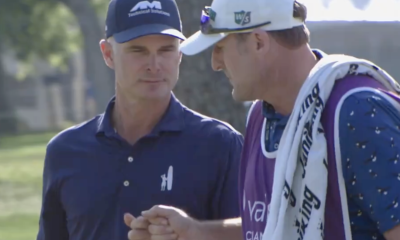
 19th Hole1 week ago
19th Hole1 week agoWhy Kevin Streelman sought USGA approval to use this equipment tool as he leads Valspar after round one













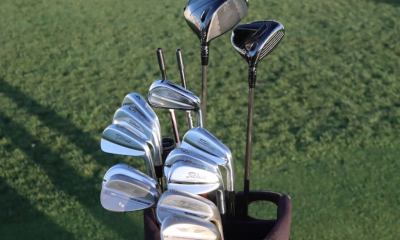

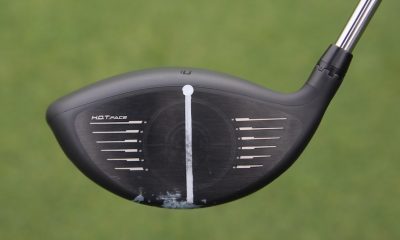

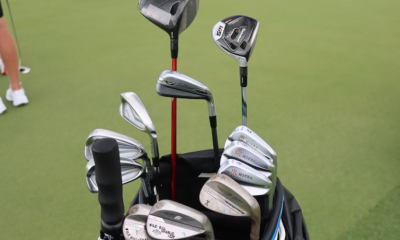

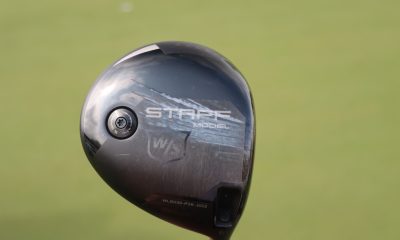

AB
Sep 11, 2015 at 11:04 pm
Trying to move the the hips to start the down swing will also cause you to thrust the hips forward. The crease in the right hip and the position of the right knee at the top of the swing must be held for the hips to stay back. Moving the left shoulder away from the chin helps the hold the hips for a split second. People have been taught to turn the hips to start the downswing from the top of the swing with disastrous results. By moving the shoulder away from the chin, the club drops and we get into the Sam Snead squat position with the hips back over the heels. Your left shoulder and left hip work together. Try this little exercise to prove it to yourself, stand straight up and have someone tap you on your left shoulder from behind you. You will notice that your left shoulder and left hip both moved at the same time when you turn. This also shows you how slow this move is from the top. This allows you to also swing left because the left shoulder is moving back to its original starting position and back behind you, not up which causes the high left shoulder and head to fall to the right straightening the hips. Tension in the lower body will cause your hips move forward and thrust outward also. Your lats will get tight forcing the hips to extend forward to release the pressure. Softness in the left shoulder and lower body helps the alleviate this. Try it!
Dennis Clark
Sep 11, 2015 at 12:26 am
you need to see someone, really. Sometimes trying to correct it yourself can dig a deeper hole. where do you live?
Andy Saunders
Sep 8, 2015 at 9:22 pm
I am a 4 cap, currently overhauling my swing with my PGA pro. I’ve been working on this for 7 weeks, with a goal of finishing the change by July 2016. I need some advice! Right now, I am 80% lost. Basically, I hook most shots. When you are doing such an extensive overhaul(grip, path, release, hip turn, etc.) how lost do you get before it starts to click? Right now, on the range, I hit 1/10 sweet. On the course I’ve gone from mid 70’s to mid 80’s. Bogeyman is very frustrating. Can someone who’s really committed to a long term change like ridding early extension please tell me that this is the right choice? Right now I am very afraid I will never be good amateur again, I’ve been as low as 1.5 and shot a low of 66 off the tips of my course. Right now, that’s a far off fantasy! Feedback is appreciated. Take care.
Rox
Sep 5, 2015 at 1:01 pm
I’m also seeing the amateur in the Video comparison roll up on his Right toes(Right foot moves towards the ball initially allowing the hips to move closer to the ball) before rolling his foot over to follow as opposed to Mahan who rolls his Right foot over to the instep and holds it to the ground long enough to help keep his hips under the upper body.
IMO this is also an issue for most amateurs that slide too far out from the upper body on the swing.
So many things that contribute to the early extension.
Get a PGA instructor to help focus on prioritizing what needs to be worked on and improvement will come.
Bill Gillenwaters
Sep 5, 2015 at 12:11 pm
I have also struggled with this to the point where my club stops shortly after impact. When I tried to keep my posture I would lose balance. After viewing this and making some practice swings, I have made some observations. It seems if I put my weight on the instep of my right heal on my backswing and less into the heal I am able to transfer left, maintain my posture, and complete my finish in balance. Does that make sense.
Dennis Clark
Aug 27, 2015 at 9:04 pm
https://youtu.be/_EPM-OqjmG0
Bill Gillenwaters
Sep 5, 2015 at 12:14 pm
Edit last comment. ” when I put my weight on instep of my right FOOT…
christian
Aug 27, 2015 at 4:11 am
A simple swing thought to avoid this is “keep the bum sticking out”
adam
Aug 27, 2015 at 9:48 am
My girlfriend (6HDCP) was taught to think of sitting on a barstool which has helped me “stick my bum out.” Helped immensely.
Loz
Aug 27, 2015 at 1:54 am
Most other articles now seem to focus on how this is often the result of a physical limitation. I’ve got very poor flexibility, I’ve never been able to touch my toes (I’m 6′ 4″ with long legs), but have in the past played to a 3 hcp in the UK. Having recently identified this through video, this wasn’t available when I was younger, this bad habit has just been part of my swing. I’d love to get rid of it but think it’s pretty much impossible now as I hardly play these days and am no doubt even less flexible. I’ve tried some of the TPI exercises and can’t get close to any of the positions they mention.
Dennis Clark
Aug 27, 2015 at 9:08 pm
Im not saying it isn’t a physical limitation, it may very well be. That’s what TPI people can help with when it is identified. But we never really differentiate a bad habit from a physical shortcoming. Both are needed, the diagnosis and the training…
Dennis Clark
Aug 26, 2015 at 10:30 pm
yep, almost always is…nobody makes bad moves for no reason; they do it because the HAVE to when the club gets out of position. Thats why I have written volumes about the body responding to the club, not the other way around
jylos
Aug 26, 2015 at 8:45 pm
I think this is a compensatory move when you feel the clubface closed during the backswing.
Dennis Clark
Aug 26, 2015 at 6:16 pm
I think it important to understand how ANY move affects impact. There is far too much emphasis on the motions of the body and not nearly enough on how these motions affect the GOLF CLUB. Thats why I mention the things the motion can CAUSE! Nobody’s hips hit the ball, but IF the hip motion is causing too steep or shallow, or toe hitting etc. THEN this might be cause. Read any of my writing and you’ll see this is how I have taught golf all my life. The only thing that matters is the club face, the path and the attack angle. Everything we do is control THOSE IMPACT FACTORS Thx for reading
Dennis Clark
Aug 26, 2015 at 5:59 pm
Sure, whatever it takes…its the great chicken or the egg debate isn’t it? Does the body drive the swing or does the swing drive the body? My experience tends to favor the latter.
blake
Aug 26, 2015 at 4:03 pm
i mean isn’t the ability to do this and really hold your spine position the difference between a scratch golfer and a 10+ handicap?
I am 32 and in the best shape of my life and I just cannot keep from losing my posture and my head rising at or near impact.
It seems that in order to really fix this issue one would need to devote a lot of time to flexibility and strength training, no?
Dennis Clark
Aug 26, 2015 at 6:03 pm
Yes thats why we’ve just added a Pilates studio to our golf academy. But losing your posture is often the result of the club getting out of position itself and the “hump” is an attempt to get it back into position. I believe you may have the ability to stay in your posture, but possibly the golf club is position is not allowing you to do so.
blake
Aug 27, 2015 at 9:12 am
yes, i think it is the club position too. after doing some research last night I think i might be mixing one plane/two plane swing tendancies and thus having to compensate on the downswing….causing my fwd hip thrust. Now i just need to figure out which plane is best i reckon
blake
Aug 27, 2015 at 9:30 am
maybe you can help make a recommendation…here is my down the line swing. what would you recommend I work on to stop thrusting at impact:
https://www.youtube.com/watch?v=QTgQOxWqlZ4
Stretch
Aug 31, 2015 at 12:12 pm
Try getting your head higher. My key is to make sure I see the ball centered in between the 2 noses (each eye sees one side of the nose.) Your video shows your head rising in order to give enough width at impact so the club head doesn’t bottom out behind the ball. I would also use video to see if the same move is evident with an iron swing.
Tb
Aug 12, 2016 at 10:09 am
Blake, first it’s shot at an angle. Get a true down the line. But it looks like your club face is pretty shut at the top. And your angle of attack looks suspect. My advice, increase forearm rotation in the half way back position and after a few topped shots, she’ll come in nicely. Increase rotation of the forearms in the backswing helps get the club in line with your shoulder plane. That should help you stay down. You can wire me the 50 bucks for that one.
Jack
Aug 26, 2015 at 11:11 pm
Not really. I learned to keep that angle and I’m still 10+. There are other things like injury and time limitations too. It is key though. Watch the pro’s, they all keep the crunch position through impact. When you execute that, it’s a very different feeling than from standing up through impact. BTW you can get pretty low scores if you just have a really good short game.
blake
Aug 27, 2015 at 9:15 am
I agree. I play to a 7 handicap but still cannot for the life of me keep the proper spine angle. I don’t think it is a strength or flexibility issue but more of an incorrect club position that leads to this form of compensation as Dennis points out. I think I am mixing one plane and two plane swing characteristics and causing the hip thrust.
other paul
Aug 28, 2015 at 6:08 am
Dont slide forward, rotate more in your center. Read the articles from this web site, i gained 30 yards on every club in the bag and everyone tells me how professional my swing looks. Driver club head speed jumped to 115 with techniques i learned here (on my first week) No jump, and no hip stalls allowed in this swing. Kelvinmiyahira.com
Derek
Aug 26, 2015 at 12:05 pm
It’s hard to shake this habit and I made progress with this drill and also using the seat on my golf buggy resting against the back of my thighs. I made the most progress by stretching my hips, thighs and hamstrings to improve my mobility. I was told to abopt an open stance and close my shoulders at address to built a consistent in to out swing path resulting in a slight draw but this also seemed to help my left hip rotate and not extend.
Jonny B
Aug 26, 2015 at 11:48 am
This is confusing to me. I was under the impression that it was good to “lead with the hips” in the golf swing, meaning the hip turn should be faster that the upper body/hands because this helps create lag and speed at the moment of impact. This allows the hips to “clear” and get out of the way of the arms which can in turn follow through to impact better.
I find that some of my best swings occur when I am trying to do just that – I concentrate on leading with my hips or “firing my hips” from the moment I reach the top of my swing. Players like Rory and Sergio seem to do this well, should we not be trying to emulate them?
Mac n Cheese
Aug 26, 2015 at 2:12 pm
There is a difference between what you describe and what the article is describing. There is no harm in a forward press of the hips, which you describe which is a small lateral shift in the hips towards the target. however; the article describes shifting the hips towards the ball, which is a different motion than a lateral shift. A great way to think of it is imagine trying to scoot forward on a stool just an inch. That quick small motion is what the article is talking about.
Dennis Clark
Aug 26, 2015 at 6:05 pm
Sure should, but they lead with the hips staying UNDER them, not going out toward the golf ball.
Jonny B
Aug 28, 2015 at 7:49 am
Thanks for clarifying
Marcus
Aug 26, 2015 at 10:14 am
Hi Mr. Clark,
I have myself suffered from this bad habit and what TW calls the ooh-lay swing. I have tried hard to find a solution and have found many “solutions” not workable. I believe the basic reason of the early extension is the swing balance, whereby the weight of the club, being swung too low and around the body causes the hips to extend, simply to maintain balance. What I have found is that keeping the clubface “outside” the hands will promote a better attack angle, swing plane and lower hands thru impact – all preventing the hips from extending thru the shot. To check that I draw a line from the clubhead through the shaft (from DTL view) and make sure my clubface never “drops” under that line in the swing. I believe that would be evident in your first video w. mahan. Does that sound like a solution ? Thanks !